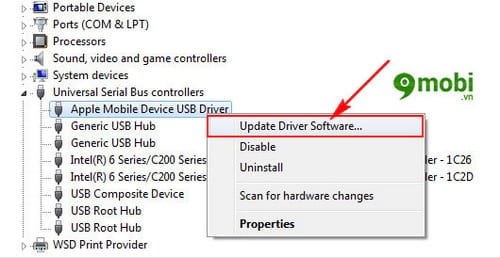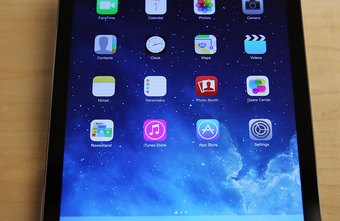
Installation Instructions:
- Save and unzip the downloadable archive.
- Locate the hard drive directory where the driver files are stored with the browser or the explore feature of Windows.
- Double click the “Setup.exe” from this directory.
- The Install dialog will appear.
- Click “Next” to continue.
- Read License Agreement and click “Yes” to proceed.
- Review Readme File Information and click “Next” to proceed.
- When the “Setup Progress” is complete click “Next” to proceed.
- Lastly, the “Setup Complete” screen appears so click “Finish” to restart your computer.
VERIFYING INSTALLATION:
- Click 'Start' then right click on 'Computer' button and then click on properties.
- Click on the 'Device Manager' selection on the left.
- Select 'Universal Serial Bus controllers'. The Intel USB 3.0 eXtensible Host Controller device and Intel USB 3.0 Root Hub device should be listed and not yellow banged. If not, the driver is not installed correctly.
IDENTIFYING VERSION NUMBER:
- Click 'Start' then right click on 'Computer' button and then click on properties.
- Click on the 'Device Manager' selection on the left.
- Select 'Universal Serial Bus controllers' then double click on the Intel USB 3.0 eXtensible Host Controller device or Intel USB 3.0 Root Hub device.
- Click on 'Driver' tab and note the driver version.
UNINSTALLING:
- NOTE: This procedure assumes the above installation process was successful. This uninstallation procedure is specific only to the version of the driver and installation files included in this package.
- Click on the 'Start' button, then click on the 'Control Panel' icon, and then double click on 'Programs and Features', right click on 'Intel USB 3.0 eXtensible Host Controller Driver' and select 'Uninstall' option
- Click 'Next' to uninstall the driver.
- Click on 'Finish' button to restart the computer.
About USB Drivers:
Windows operating systems automatically apply a generic driver that allows users to transfer files using the USB (Universal Serial Bus) port; however, installing the appropriate software can bring about significant changes.
If the proper USB software is installed, systems will benefit from improved compatibility with different devices, numerous fixes regarding USB issues, and various other changes that can increase transfer speed with external storage drives.
When it comes to the installation steps, simply check to make sure that the download record is compatible with your system characteristics, get the package, run the setup, and follow the on-screen instructions for a complete update.
Bear in mind that even though other OSes might be compatible, it would be best if you applied this package only on specified platforms. In addition to that, as technology evolves from one day to another, we recommended that you always use the latest software available.
That being said, click the download button, get and apply the present version and enjoy your newly updated system. Also, constantly check back with our website to find out when a new version is available.
- COMPATIBLE WITH:
- Windows 7 64 bit
- file size:
- 6.2 MB
- filename:
- INDUSB-00266104-0042.EXE

In the Device Manager window, right-click 'Universal Serial Bus controllers' and choose 'Scan for hardware changes' from the shortcut menu. Locate the Apple Mobile Device USB Driver in this list. If the Apple Mobile Device USB Driver is not listed, continue to step 3.
- CATEGORY:
- Laptop / Notebook
It is highly recommended to always use the most recent driver version available.
Try to set a system restore point before installing a device driver. This will help if you installed an incorrect or mismatched driver.
Problems can arise when your hardware device is too old or not supported any longer.
Ok, here's what's going on. Hopefully someone can help, because I'm kinda getting a little panicky atm.
I'm trying to work on someone's computer. I have been working with them for a few days through formatting & data recovery on their old pc, as well as set up of their new one. I should note I am doing this remotely, because I have no other choice in this case, & the user is about as basic as it gets. The computer is quite a few years old, and there have been some small upgrades to HDD several years back etc. Someone apparently built it for him so there was no discs of any kind with it, or so I'm emphatically told anyway. There was an error they were stuck on for months and couldn't get past it and the only way ultimately I was able to do anything with it was installing Windows XP Pro. Finally, its paperweight status was upgraded to useful, I recovered most of the most important data he'd lost & of course, another problem had to pop up.
There are no USB drivers listed in device manager. There are also no unknown devices. Actually, to correct myself there is one, but it is an audio device, which will be the next problem I'l have to fix.
I have NO idea where to even start. I encountered this problem only once before, on an older Dell, and although it was a pain in the neck, the disc it came with did fix it with a little coaxing, however in that case the controller was listed, but with a question mark. I wouldn't even know where to begin to figure out who makes the controller at this point, but even if I did, that seems like it would be more to solve the driver problem & until I get the computer to even acknowledge it has usb support at all that's kinda moot.
I know I can talk the person through checking to see if legacy USB support is enabled in the BIOS (a conversation I don't relish the thought of)
I also plan on having them check to see if by any chance it shows up in device manager in safe mode (not that I'm sure what I'd do from there)
Does anyone have any other ideas? I'm quite lost in the dark here & the person who was there who I could much better direct about checking things had to run to visit a terminally ill relative, so there is no telling when he'll be back there.
I kinda need to go severely minimalist with my directions to this guy, so I need hints as to what truly might fix it. Most people would be focusing on the new toy (laptop) by now, but he's still fussing over the old one so I really need to get it set.
I know this was a long post. I appreciate the time anyone spent reading it & any good ideas you might have!
Apple Universal Serial Bus Controller Driver Windows 7
- Universal serial bus controller driver free download - VIA V-RAID Driver, Epson TWAIN USB Scanner Driver, EnE CardBus Controller Driver 5.1.2600.2003.zip, and many more programs.
- Have Oracle VM VirtualBox present an ISO CD-ROM image to a guest system as if it were a physical CD-ROM. Provide a guest system access to the physical network through its virtual network card.